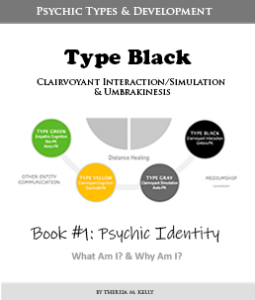- What Am I? (Type Green)
- Psychic “Ability” (Type Green)
- Psi, ESP, & Clairvoyance (Type Green)
- Dreams, Impressions, & Hallucinations (Type Green)
- Empathic Cognition: Part I (Type Green)
- Empathic Cognition: Part II (Type Green)
EMPATHIC COGNITION – PART II
 When the emotional experience appears to “pop up” into the experiencers mind this type of experiencer could be described as an experiencer of spontaneous empathic cognition. In this case, the emotional experience pops up rather than being intentionally or knowingly ask for.
When the emotional experience appears to “pop up” into the experiencers mind this type of experiencer could be described as an experiencer of spontaneous empathic cognition. In this case, the emotional experience pops up rather than being intentionally or knowingly ask for.
 Experiencers of intentional empathic cognition are experiencers who choose or specify a certain group from which they wish to receive collective emotional information about.
Experiencers of intentional empathic cognition are experiencers who choose or specify a certain group from which they wish to receive collective emotional information about.
In other words, spontaneous experiencers subconsciously request information while intentional experiencers make conscious requests.
Intentional experiencers can also generalize their search from a “which” (group) to a “what” (emotion or event) based search depending on the type of collective emotions the experiencer needs. With this second “what” based search, it is a search for collective emotional events.
 For example, this refers to when a large group of usually thousands or millions of individual emotional experiences, or group consciousness, becomes coherent, clear, and synchronized all at once.
For example, this refers to when a large group of usually thousands or millions of individual emotional experiences, or group consciousness, becomes coherent, clear, and synchronized all at once.
In other words, when a unified field of consciousness occurs, often without information about what the event is or where it is, unless there is a telepathic component, an experiencer can receive emotional information about the event when an event takes place.
 When it comes to the scientific research of emotions, an EMOTIONAL CLIMATE is defined as the emotional relationships between members of a community or nation. Emotional climates are thought to contribute to maintain the political unity/togetherness or cultural identity of the members of a community or nation.
When it comes to the scientific research of emotions, an EMOTIONAL CLIMATE is defined as the emotional relationships between members of a community or nation. Emotional climates are thought to contribute to maintain the political unity/togetherness or cultural identity of the members of a community or nation.
Emotional climates appear to be processes that have a social function and are formed by a “group of the four basic emotions” which are fear, anger, sadness, and joy with an accompanied action.
 While an emotional climate appears to be based on more than just emotions such as beliefs, social representations, and so on, it is believed to be what empathic cognition is adding to.
While an emotional climate appears to be based on more than just emotions such as beliefs, social representations, and so on, it is believed to be what empathic cognition is adding to.
These collective events are not believed to be simply a grouping of individual emotions or all emotional relations to an event, but rather collective events based on the majority of certain emotions, which are what is believed to be received by the experiencer.
 In other words, if 70K people felt fearful, and 2k people felt joy, the experiencer would more likely pick up on the group feeling fearful unless intentionally specifying the group feeling joy. Normally, emotions in very large groups of people fluctuate wildly from moment to moment.
In other words, if 70K people felt fearful, and 2k people felt joy, the experiencer would more likely pick up on the group feeling fearful unless intentionally specifying the group feeling joy. Normally, emotions in very large groups of people fluctuate wildly from moment to moment.
 But when an event that affects all of them at the same time occurs many of their emotions become the same or synchronized, suggesting that a largescale emotional event has occurred in real-time. This is when the experiencer of empathic clairvoyant cognition becomes aware of the emotional event.
But when an event that affects all of them at the same time occurs many of their emotions become the same or synchronized, suggesting that a largescale emotional event has occurred in real-time. This is when the experiencer of empathic clairvoyant cognition becomes aware of the emotional event.






